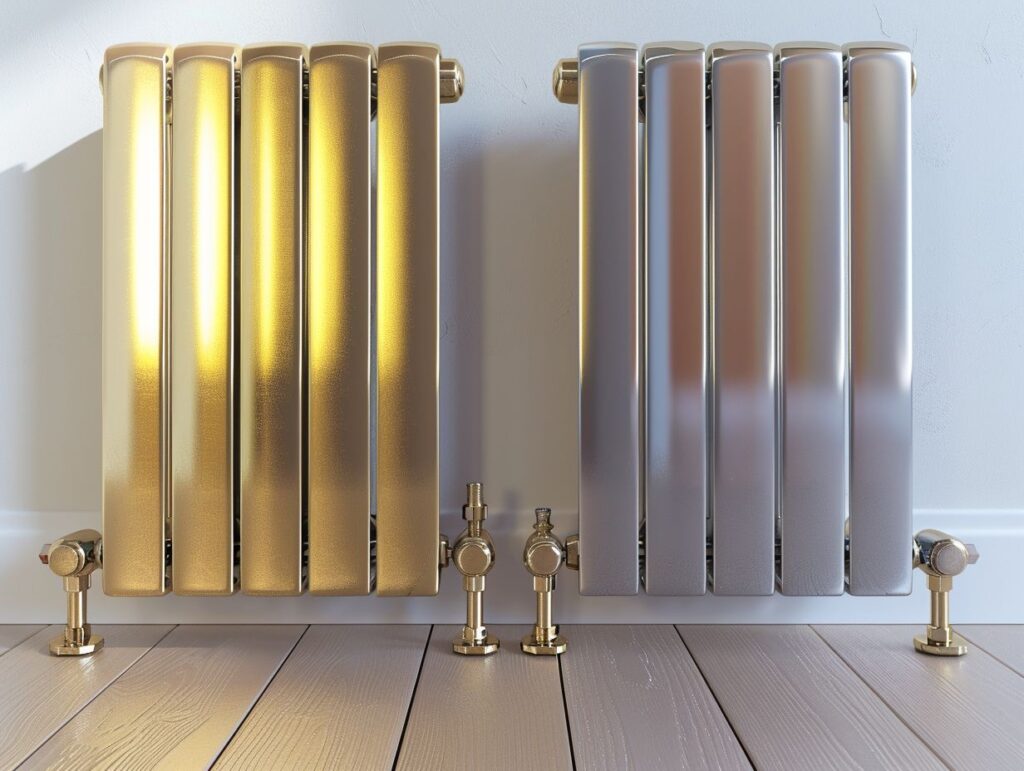When deciding between gold and chrome heating options for your home, you will want to carefully consider the benefits and drawbacks of each. This includes examining key differences in performance and aesthetics.
Factors such as cost, maintenance requirements, and other important considerations should also be taken into account before making a decision. By the end of this article, you should have a clearer understanding of which heating option is most suitable for your specific needs.
Key Takeaways:
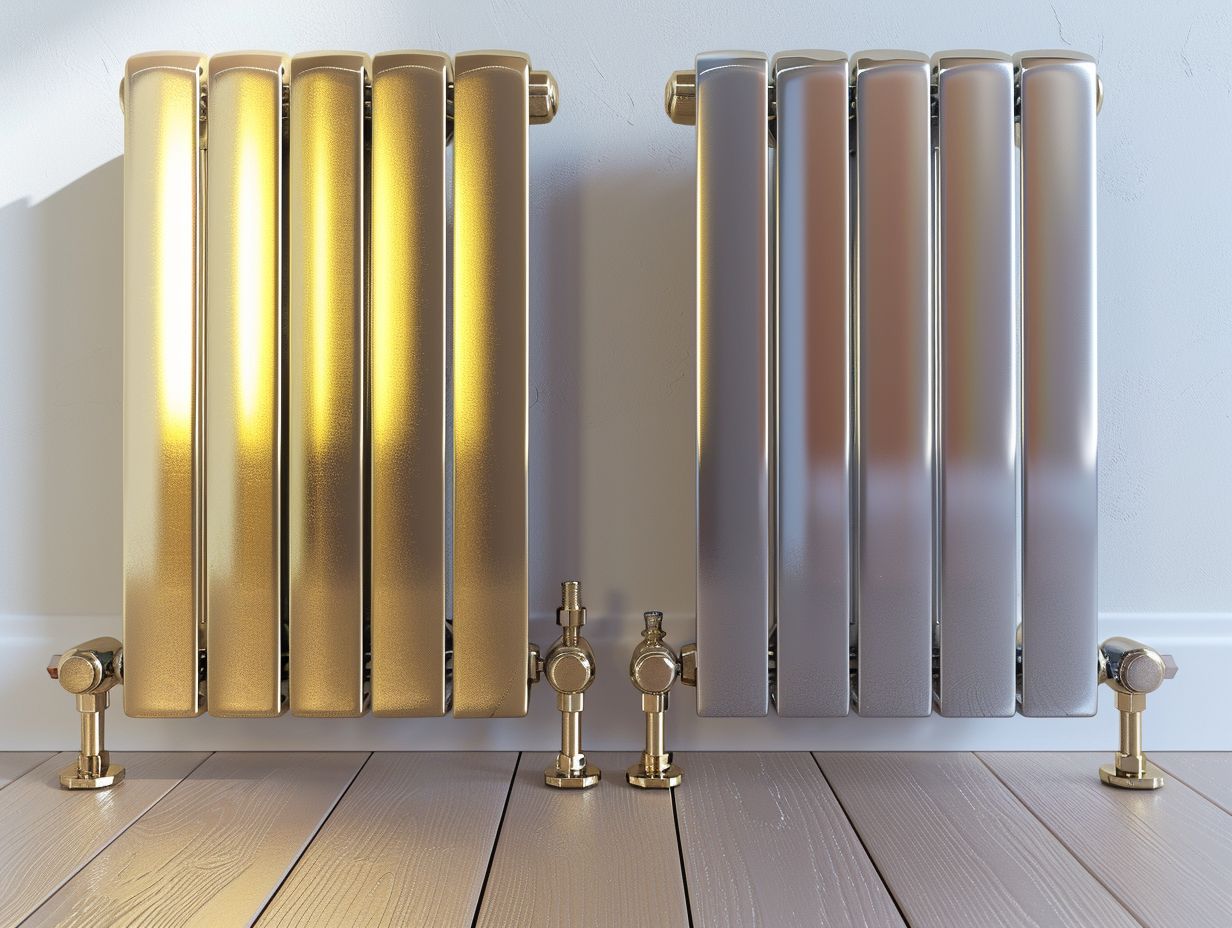
- Gold heating provides a luxurious and elegant look, but comes with a higher cost and requires more maintenance.
- Chrome heating offers a sleek and modern aesthetic, but may not provide as much heat output as gold heating.
- Before choosing between gold and chrome heating, consider factors such as budget, maintenance, and desired aesthetic to find the best option for your home.
What are Gold and Chrome Heating?
When considering heating systems, you may come across gold and chrome finishes, which are characterised by metallic elements like brushed gold radiators and black nickel lacquer radiators. These contemporary metallic finishes are commonly utilised to establish an industrial chic ambiance in modern living areas.
The elegant and lustrous characteristics of gold and chrome finishes can introduce a sense of opulence and refinement to any space. For example, the clean lines of a brushed gold radiator can harmonise with a minimalist interior design scheme, while a black nickel lacquer radiator can provide a striking contrast in a monochromatic room.
Beyond their heating functionality, these finishes also serve as focal points that elevate the overall aesthetic of a room. Whether it’s contemporary wall-mounted designs or classic column radiators, these metallic finishes demonstrate their adaptability across various heating system models.
Benefits and Drawbacks of Gold Heating
Gold heating systems provide a luxurious aesthetic to any space, enhancing the decor with their metallic hues. Radiators such as the Delta model and Bosun mild steel radiator in gold tones not only offer warmth but also contribute to a stylish ambiance. Additionally, towel rails like the Metro and Rosa models bring a touch of sophistication to bathrooms.
Pros and Cons of Using Gold Heating
Gold heating systems offer a luxurious and opulent appearance, particularly through the use of metallic gold radiators and towel rail radiators. Incorporating an electric heating element ensures effective heating in living spaces, making gold radiators an elegant and practical choice for electric heating solutions.
The reflective properties of gold surfaces aid in even heat distribution throughout the room, fostering a warm and inviting atmosphere. With its high thermal conductivity, gold heating systems can swiftly elevate the room temperature, delivering a prompt response to cold weather conditions.
One potential drawback of gold heating systems is their initial cost, as they may require a higher investment for installation compared to conventional heating alternatives. Proper maintenance and cleaning of gold surfaces are essential to preserve their luxurious aesthetic.
Benefits:
1. Chrome heating provides quick and efficient heating, allowing for faster warm-up times.
2. Chrome heating elements are durable and long-lasting, reducing the need for frequent replacements.
3. Chrome heating distributes heat evenly, ensuring consistent temperature throughout the heating surface.
Drawbacks:
1. Chrome heating may be more expensive compared to other heating options.
2. Chrome heating elements can be more challenging to clean and maintain.
3. Chrome heating may not be suitable for certain sensitive materials that require lower heat settings.
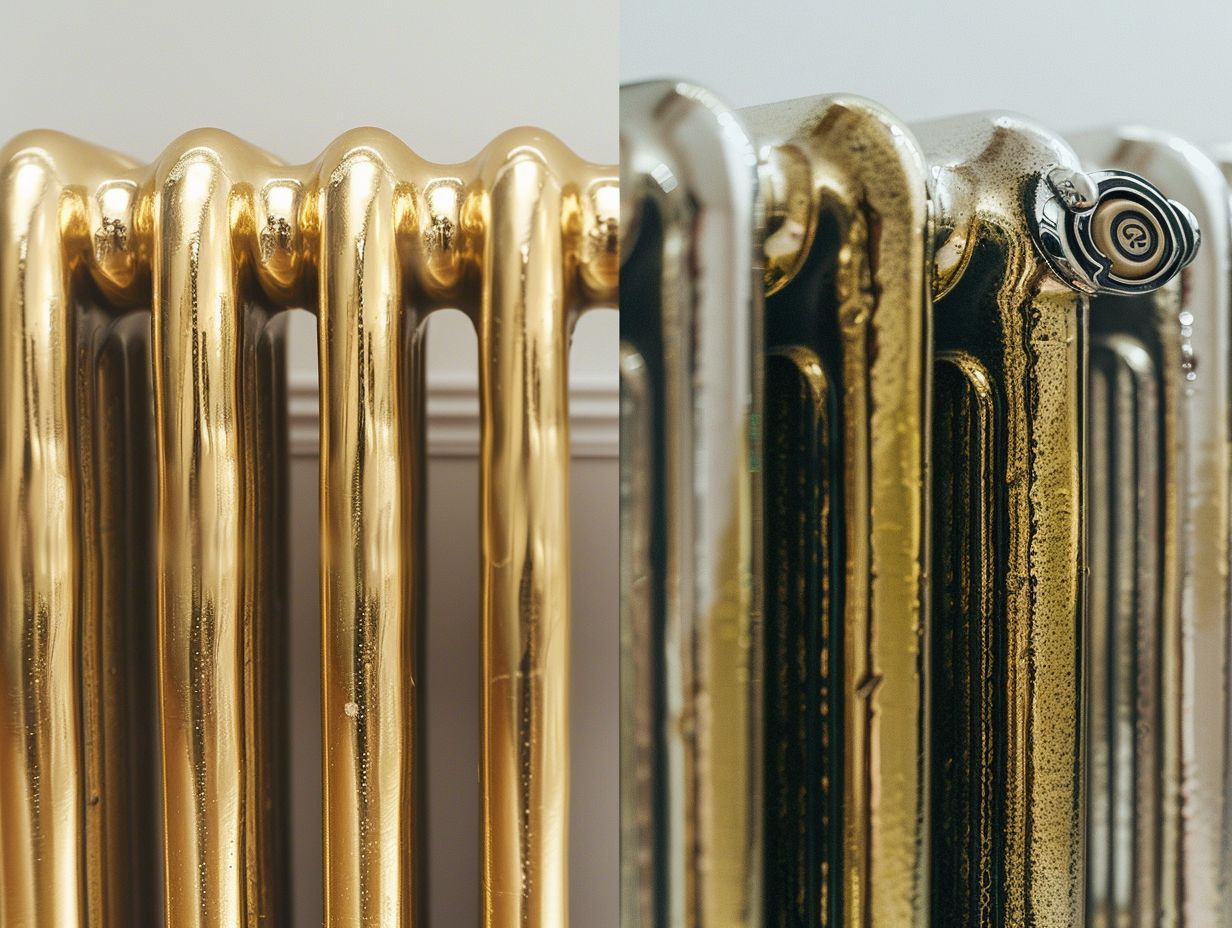
Chrome heating systems provide a stylish and contemporary look, featuring choices such as the HIX Chrome towel radiator and VOS heated towel rail. The CLEO open-side heated towel rail in chrome finish offers a blend of practicality and elegance, making it a favoured option for bathrooms and kitchens.
Pros and Cons of Using Chrome Heating
Chrome heating systems offer a smart and contemporary look, particularly when paired with towel rail radiators. The inclusion of an electric heating element ensures efficient heating for your living room, making chrome radiators an elegant and practical choice for modern heating solutions.
The reflective surface of chrome radiators not only adds a hint of elegance to your space but also visually enhances the room through its reflective properties, giving the impression of a larger space. Chrome heating systems are easy to clean and maintain, ensuring a long-lasting shine that complements various interior styles.
It is important to note that the initial cost of chrome radiators may be higher compared to traditional heating options, and the shiny surface can highlight fingerprints and water spots more visibly.
Comparison of Gold and Chrome Heating
When comparing gold and chrome heating options, you will find that traditional column radiators in black nickel lacquer offer a classic yet contemporary choice. Cast iron radiators provide a durable and efficient heating solution that complements both gold and chrome finishes.
Key Differences in Performance and Aesthetics
The key differences between gold and chrome heating systems are found in their performance and aesthetics. Gold radiators offer a warmer, luxurious feel with a grey metallic finish, whilst chrome radiators present a sleek and modern appearance suitable for industrial chic and contemporary living spaces.
Gold heating systems convey a sense of opulence and grandeur, making them perfect for elegant and classic interior designs. The rich, warm tones of gold radiators can introduce a touch of sophistication to traditional or vintage-inspired spaces.
In contrast, chrome heating systems boast a reflective surface that contributes to a minimalist and sophisticated ambience, seamlessly blending with modern and minimalist decor styles. The sleek and shiny look of chrome radiators can establish a contemporary focal point in bathrooms, kitchens, or loft-style apartments.
Factors to Consider Before Choosing a Heating Option
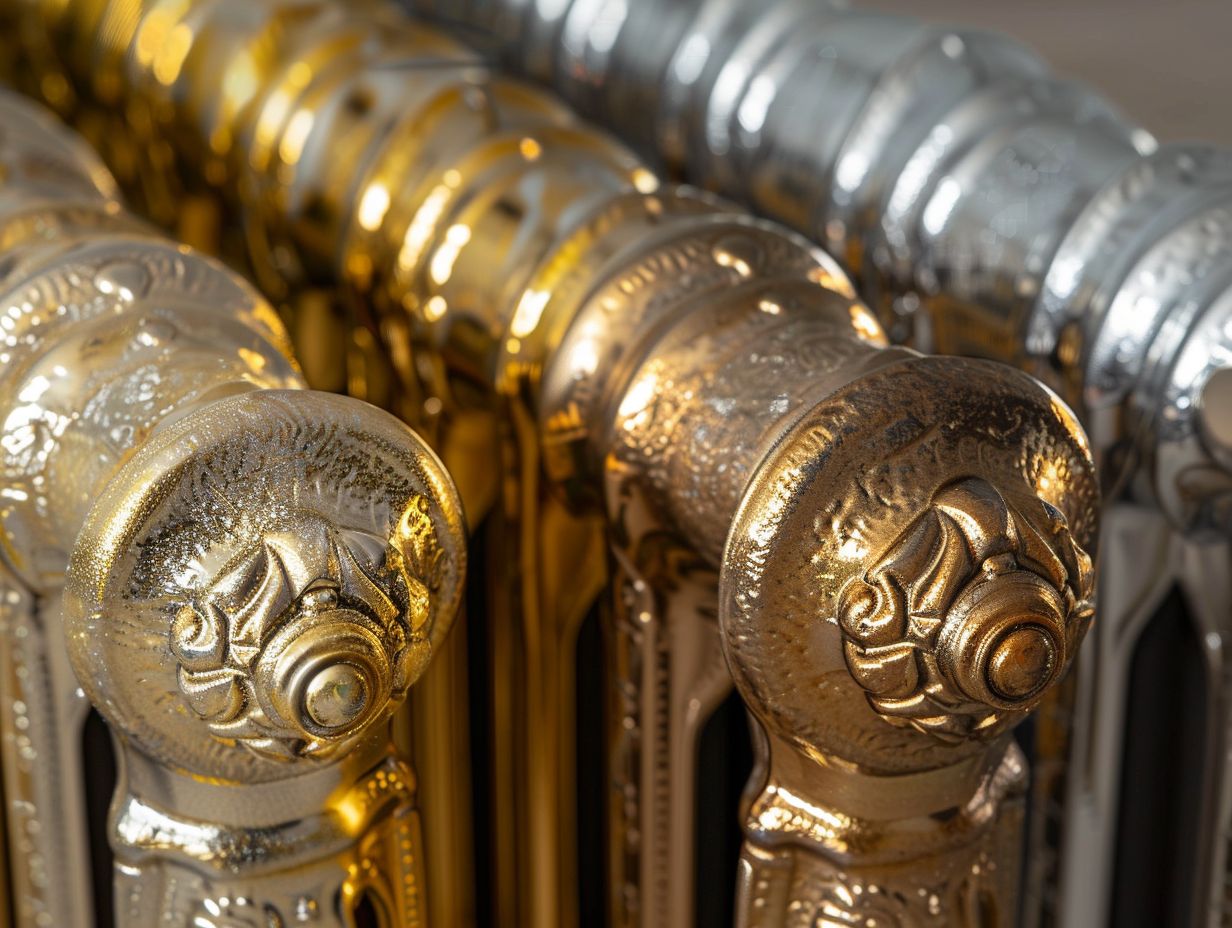
When selecting a heating option, it is important for you to consider factors such as angled radiator valves for efficient heat distribution, integration with central heating systems, the advantages of underfloor heating, energy-saving strategies, and environmentally friendly heating choices like heat pumps or solar heating panels.
Cost, Maintenance, and Other Considerations
When evaluating heating options, you need to consider factors such as cost, maintenance requirements, and energy efficiency to make an informed decision. Your choices include gas fires, wood-burning stoves, energy-efficient central heating systems, and pellet stoves, each with its own set of benefits and considerations.
Gas fires provide instant warmth and a cosy ambiance, but you may face higher running costs due to fluctuating gas prices. Wood-burning stoves offer a traditional charm but require regular cleaning and maintenance of the chimney.
Energy-efficient central heating systems are well-suited for larger spaces, ensuring consistent warmth throughout the house while consuming less energy. Pellet stoves are eco-friendly and efficient, using compressed wood pellets as fuel, but their initial cost may be higher compared to other options.
Frequently Asked Questions
What is the difference between gold heating and chrome heating radiators?
Gold heating radiators are made from brass, while chrome heating radiators are made from stainless steel. This means that gold radiators have a warmer and more traditional appearance, while chrome radiators have a shinier and modern look.
Which type of heating radiator is more energy efficient?
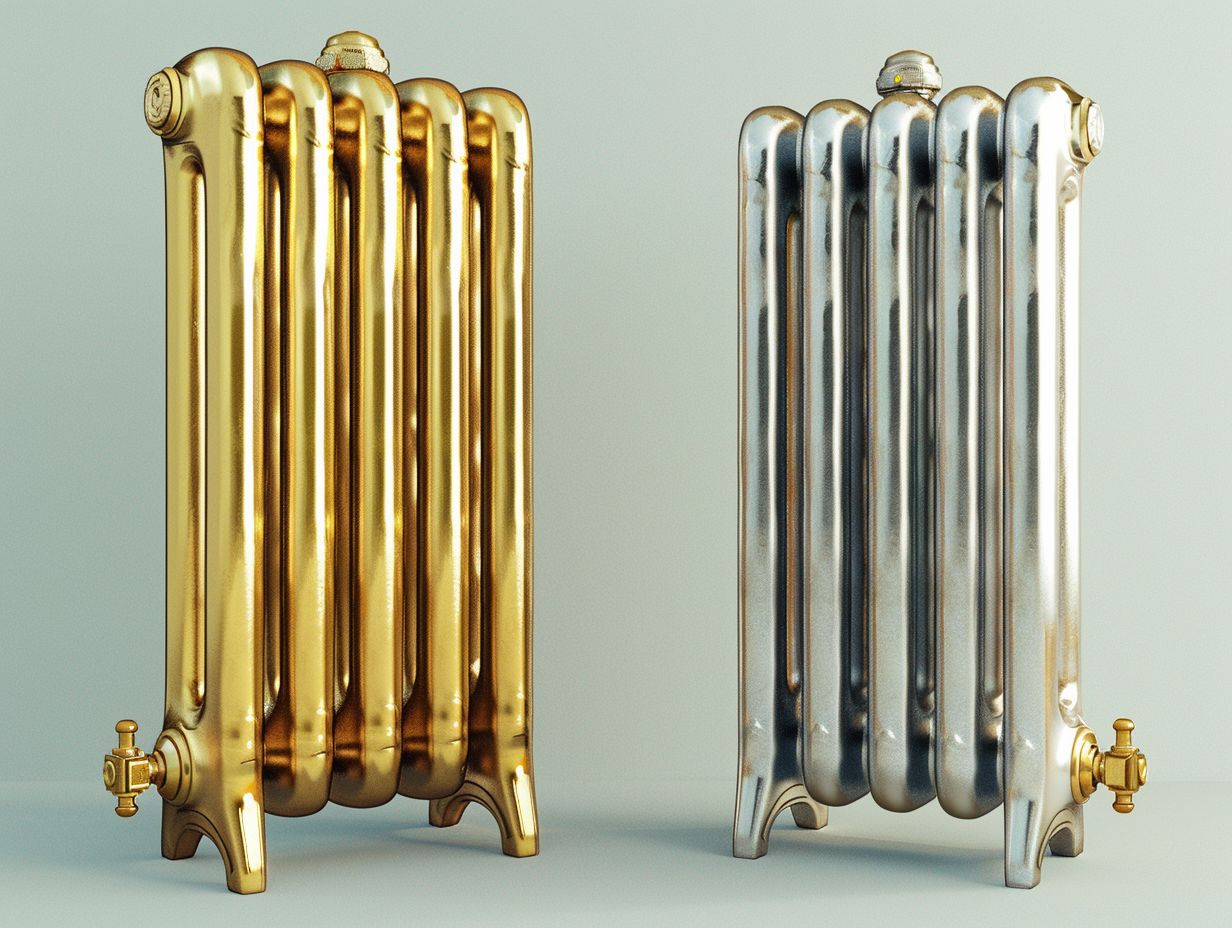
Both gold and chrome heating radiators are equally energy efficient. The type of radiator does not affect its ability to heat a room, as long as it is correctly sized for the space.
Do gold heating radiators cost more than chrome heating radiators?
Yes, gold heating radiators tend to be more expensive than chrome heating radiators. This is due to the cost of the materials used and the manufacturing process.
Can I use both gold and chrome heating radiators in my home?
Yes, you can mix and match gold and chrome heating radiators in your home. This can create a unique and stylish look, as long as the radiators have the same heat output and are sized correctly for the space.
Is it necessary to maintain gold and chrome heating radiators differently?
No, the maintenance for both types of radiators is the same. It is recommended to clean the surface with a soft cloth and mild detergent, and to check for any leaks or malfunctions regularly.
Are there any disadvantages to using gold or chrome heating radiators?
The only potential disadvantage of using gold or chrome heating radiators is that they may show fingerprints or water spots more easily than painted radiators. However, this can be easily remedied with regular cleaning and maintenance.

